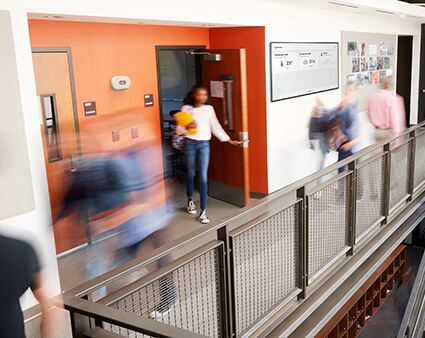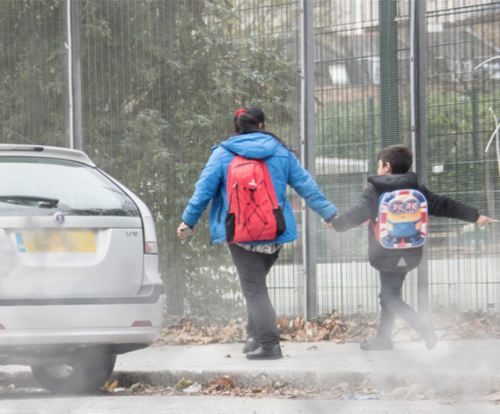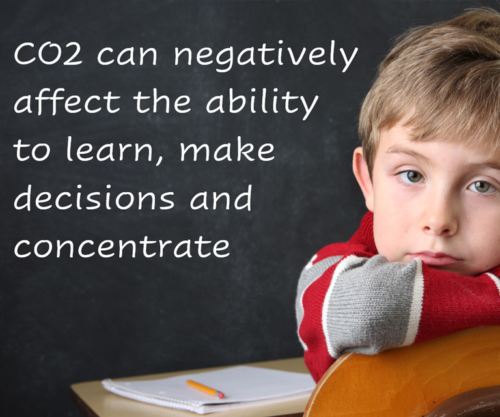
Virus Transmission Risks
Virus transmission risks are significantly greater in indoor spaces due to the spread of microscopic droplets or aerosols, which can remain suspended in the air for long periods of time.
When someone with COVID-19 or other airborne virus like seasonal flu or the common cold breathes, speaks, coughs or sneezes, they release tiny droplets and aerosols that contain the virus. Larger droplets fall quickly to the ground, however, aerosols containing the virus can remain suspended in the air. If someone breathes in these airborne virus particles, they too can become infected.
Some circumstances increase the risk of infection:
- Indoor spaces, particularly indoor environments where ventilation with outside air is inadequate
- Activities that increase emission of respiratory fluids, such as speaking loudly, singing, or exercising
- Prolonged time of exposure (longer than a few minutes)
- Crowded spaces, particularly if face coverings are inconsistently or improperly worn
In an average size meeting room without adequate ventilation, three people can cause CO2 to reach a level that affects their cognitive function in just 45 minutes. And if one of those people are sick, it could take between five and 30 minutes for them to produce enough virus particles to contaminate the other two.
So, in poorly ventilated rooms the amount of virus in the air can build up, increasing the risk of spreading COVID-19, especially if there are lots of infected people in the room. The virus can also remain in the air after an infected person has left the room.
As classrooms have high occupancy rates there is a higher than normal risk of the transmission of viruses like COVID-19, flu and colds. The recent COVID-19 pandemic took its toll on our schoolchildren who received less face to face tuition due to lockdowns, making the management of air quality paramount in schools today.
Evotech recently published the results of a year long, live study on CO2 levels in classrooms which can be downloaded here. The results show poorly ventilated classrooms in all five #CleanAirSchools participant buildings.
How to manage indoor air quality
A holistic approach to limiting the risk of virus transmission indoors should be taken, that includes:
- Increasing ventilation with outdoor air
- Air filtration – filters on mechanical ventilation systems and where mechanical ventilation is not available, the use of air purification units
- The use of CO2 monitors to ensure the effectiveness of the above two points and highlight when ventilation needs to be increased
- Social distancing and /or smaller class sizes
- Wearing of face masks
- Regular surface cleaning
- Handwashing
Indoor air quality monitoring
High levels of CO2 indicate that a space is poorly ventilated so, by monitoring the levels of this gas you are able to determine when ventilation needs to be increased and the UK Government recently provided all state schools with CO2 monitors for this reason. CO2 should ideally be monitored continuously with a monitor placed in every classroom and other high use spaces like canteens, sports halls and offices (large spaces may need additional monitors).
 Whilst CO2 is an indicator of poor ventilation in a space, there are other factors involved in the transmission of viruses indoors, as viruses have been shown to attach themselves to other pollutants like particulate matter that enable them to remain airborne for longer periods of time. For this reason and the fact that particulates, volatile organic compounds and radon gas are themselves harmful to health, it is advised that these pollutants are also continually monitored. There are monitors that include sensors for all these contaminants, in addition to CO2 and environmental factors like humidity, temperature and air pressure, which also play a part in the transmission of viruses.
Whilst CO2 is an indicator of poor ventilation in a space, there are other factors involved in the transmission of viruses indoors, as viruses have been shown to attach themselves to other pollutants like particulate matter that enable them to remain airborne for longer periods of time. For this reason and the fact that particulates, volatile organic compounds and radon gas are themselves harmful to health, it is advised that these pollutants are also continually monitored. There are monitors that include sensors for all these contaminants, in addition to CO2 and environmental factors like humidity, temperature and air pressure, which also play a part in the transmission of viruses.
Many monitors include an LCD display and a dashboard that, if required, can show real-time air quality data on public facing screens. Making air quality data public builds confidence and trust in using public spaces.
When monitors indicate that CO2 levels are high (above 1500ppm), ventilation should be increased by turning up mechanical ventilation systems or opening doors and windows. This mixes outdoor air with stale indoor air, diluting CO2, other pollutants and viruses circulating in the air. If the opening of windows and doors is the only means of ventilation then try to create a cross-flow of air by opening windows and doors on opposite sides of the room. The air pressure difference between the windows causes a cross breeze, pulling fresh air in on one side of the room and pushing stale air out on the other.


